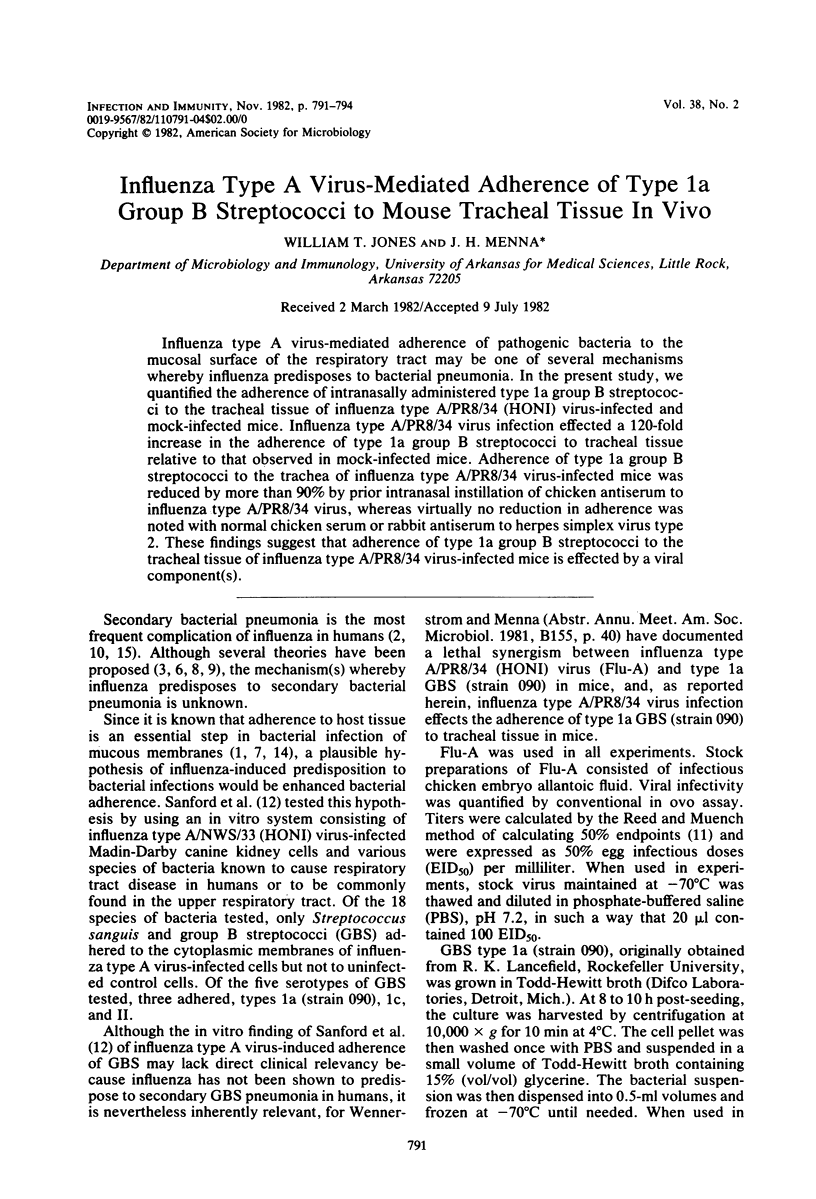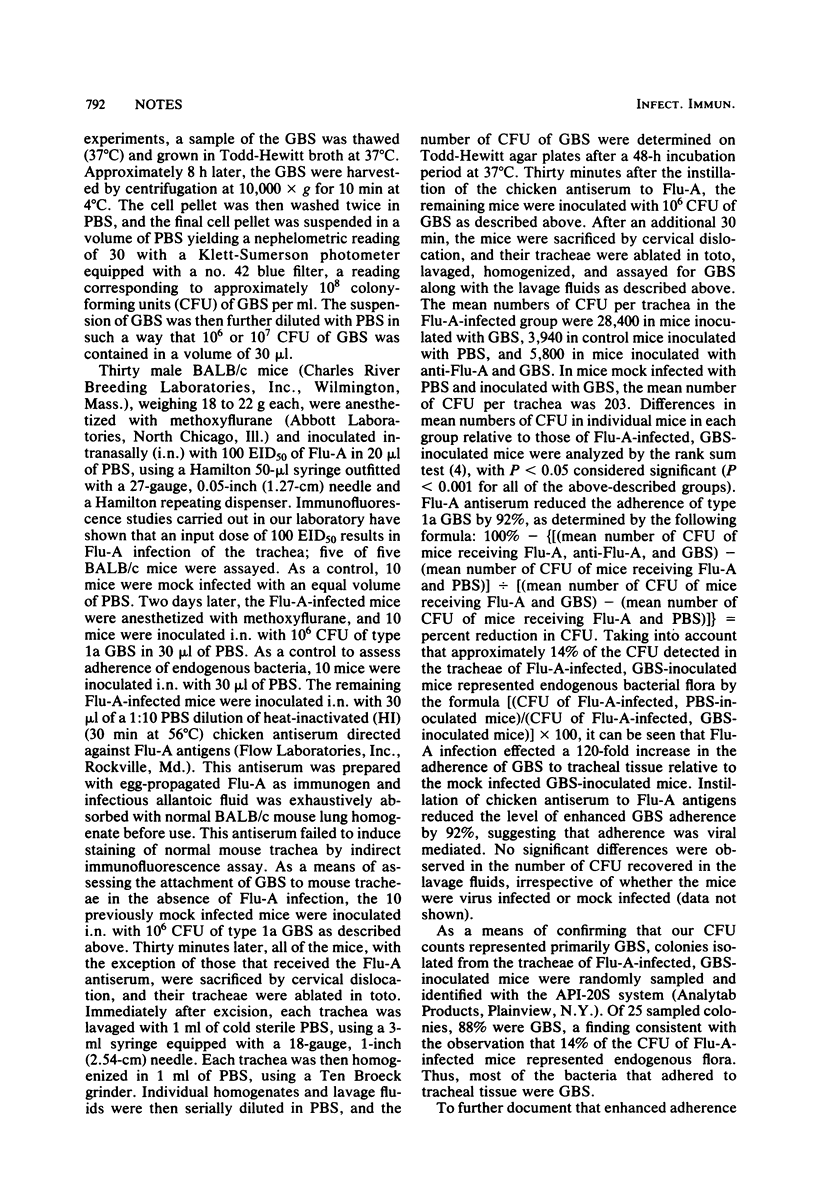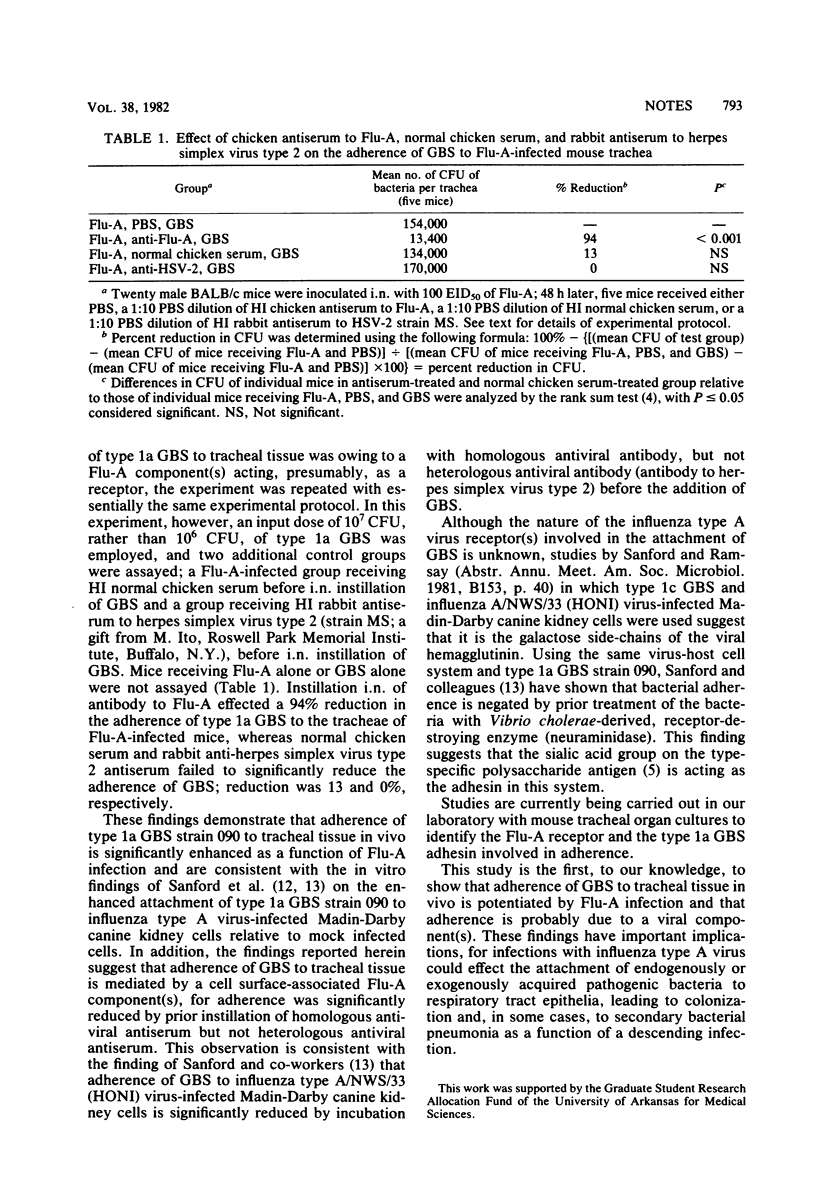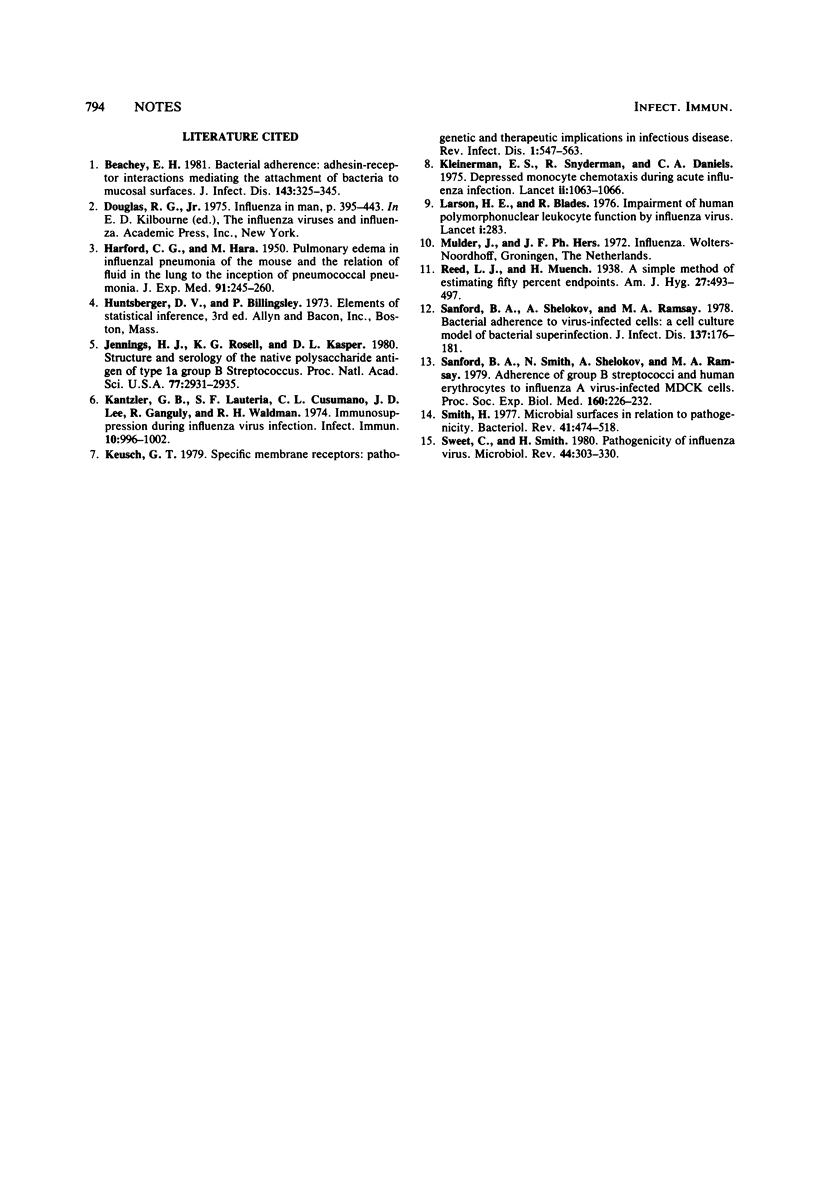Abstract
Influenza type A virus-mediated adherence of pathogenic bacteria to the mucosal surface of the respiratory tract may be one of several mechanisms whereby influenza predisposes to bacterial pneumonia. In the present study, we quantified the adherence of intranasally administered type 1a group B streptococci to the tracheal tissue of influenza type A/PR8/34 (HONI) virus-infected and mock-infected mice. Influenza type A/PR8/34 virus infection effected a 120-fold increase in the adherence of type 1a group B streptococci to tracheal tissue relative to that observed in mock-infected mice. Adherence of type 1a group B streptococci to the trachea of influenza type A/PR8/34 virus-infected mice was reduced by more than 90% by prior intranasal instillation of chicken antiserum to influenza type A/PR8/34 virus, whereas virtually no reduction in adherence was noted with normal chicken serum or rabbit antiserum to herpes simplex virus type 2. These findings suggest that adherence of type 1a group B streptococci to the tracheal tissue of influenza type A/PR8/34 virus-infected mice is effected by a viral component(s).
Full text
PDF



Selected References
These references are in PubMed. This may not be the complete list of references from this article.
- Beachey E. H. Bacterial adherence: adhesin-receptor interactions mediating the attachment of bacteria to mucosal surface. J Infect Dis. 1981 Mar;143(3):325–345. doi: 10.1093/infdis/143.3.325. [DOI] [PubMed] [Google Scholar]
- Jennings H. J., Rosell K. G., Kasper D. L. Structure and serology of the native polysaccharide antigen of type Ia group B streptococcus. Proc Natl Acad Sci U S A. 1980 May;77(5):2931–2935. doi: 10.1073/pnas.77.5.2931. [DOI] [PMC free article] [PubMed] [Google Scholar]
- Kantzler G. B., Lauteria S. F., Cusumano C. L., Lee J. D., Ganguly R., Waldman R. H. Immunosuppression during influenza virus infection. Infect Immun. 1974 Nov;10(5):996–1002. doi: 10.1128/iai.10.5.996-1002.1974. [DOI] [PMC free article] [PubMed] [Google Scholar]
- Kleinerman E. S., Snyderman R., Daniels C. A. Depressed monocyte chemotaxis during acute influenza infection. Lancet. 1975 Nov 29;2(7944):1063–1066. doi: 10.1016/s0140-6736(75)90432-8. [DOI] [PubMed] [Google Scholar]
- Larson H. E., Blades R. Impairment of human polymorphonuclear leucocyte function by influenza virus. Lancet. 1976 Feb 7;1(7954):283–283. doi: 10.1016/s0140-6736(76)91407-0. [DOI] [PubMed] [Google Scholar]
- Sanford B. A., Shelokov A., Ramsay M. A. Bacterial adherence to virus-infected cells: a cell culture model of bacterial superinfection. J Infect Dis. 1978 Feb;137(2):176–181. doi: 10.1093/infdis/137.2.176. [DOI] [PubMed] [Google Scholar]
- Sanford B. A., Smith N., Shelokov A., Ramsay M. A. Adherence of group B streptococci and human erythrocytes to influenza A virus-infected MDCK cells. Proc Soc Exp Biol Med. 1979 Feb;160(2):226–232. doi: 10.3181/00379727-160-40424. [DOI] [PubMed] [Google Scholar]
- Sweet C., Smith H. Pathogenicity of influenza virus. Microbiol Rev. 1980 Jun;44(2):303–330. doi: 10.1128/mr.44.2.303-330.1980. [DOI] [PMC free article] [PubMed] [Google Scholar]


